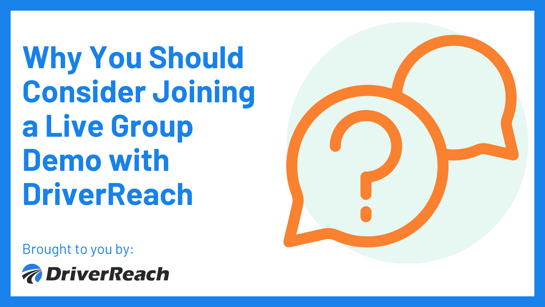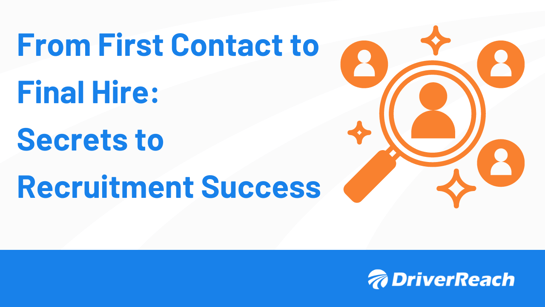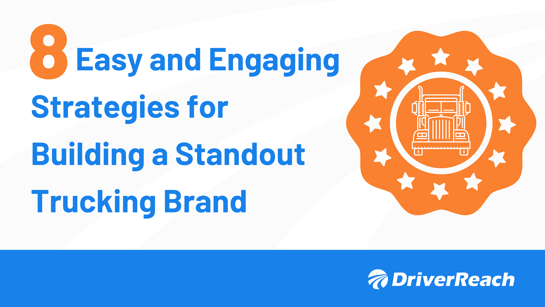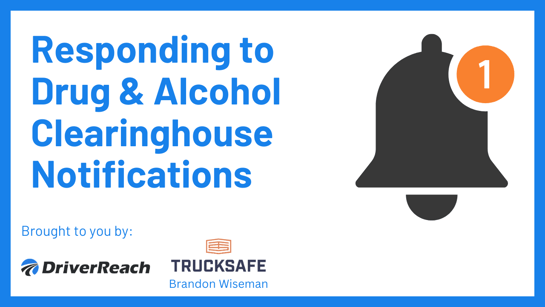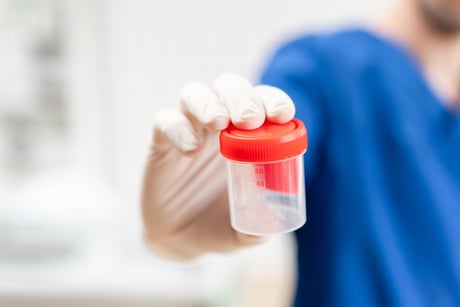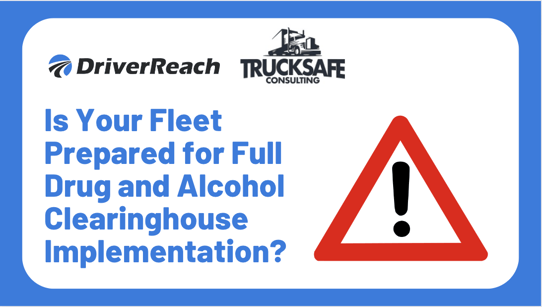💡The Drug & Alcohol Clearinghouse became fully implemented on January 6, 2023. Per the FMCSA, employers of CDL drivers will no longer need to include drug and alcohol requests in the scope of the safety performance history process of hiring a driver—the employer’s query of the Clearinghouse will satisfy that requirement. Other previous employment verification processes remain unchanged—check out VOE+ to make some of these processes easier on your team!
The information on this page is historical, educational material on this change as part of DriverReach industry content offerings. For more information on the FMCSA’s Drug and Alcohol Clearinghouse, please visit its FAQ page.
Starting on January 6, 2020, the hiring and ongoing compliance process for CDL carriers and recruiters will look a lot different than it does today. With the arrival of the Drug & Alcohol Clearinghouse, carriers will have to go through additional steps to ensure their drivers are legally allowed on the road.
Recently, Dave Osiecki, President of Scopelitis Transportation, and Sean Garney, Vice President of Scopelitis Transportation, spoke during an extremely informative webinar about what carriers need to know about the Clearinghouse as well as actionable steps to register and prepare.
Miss the Webinar? Watch On-Demand Here!
Here is Dave and Sean’s brief overview of why the Clearinghouse came to be, what it means for carriers, and who will be impacted by the changes:
What is the Drug & Alcohol Clearinghouse?
The inherent reason behind the Clearinghouse, according to Dave and Sean, was a loophole in the CDL driver hiring system. If drivers failed a drug or alcohol test at one carrier, they could easily move on to another company and pass the test there. There was no one source of truth around which drivers were actually allowed on the road and which drivers were legally disqualified.
The solution FMCSA came up with is the Drug & Alcohol Clearinghouse, otherwise known as a database, to house all of the DOT-regulated drug and alcohol violations. The Clearinghouse is populated with data from carriers and medical review officers (as well as third-party partners), and all parties are required to update driver records in the Clearinghouse as new information comes available.
Here are three ways drivers and carriers will engage with the Clearinghouse out of the gate on Jan. 6th:
- Carriers will be required to query the Clearinghouse database for all potential new CDL driver hires to see if any positive drug or alcohol information exists
- They will also be required to perform a Clearinghouse query at least once a year for all of the CDL drivers they employ
- All CDL drivers who intend on finding a new CDL driving job must register with the Clearinghouse so they are able to provide consent for the prospective employer to perform the necessary pre-employment full query
Who’s In and Who’s Out?
One way Dave and Sean described the Clearinghouse in their webinar was as a ‘push and pull system’. This means that carriers will be responsible for pulling information out of the system during queries as well as pushing information into the Clearinghouse when incidents arise.
Entities required to use the Clearinghouse include:
- All employers of CDL drivers
- Designated third-party administrators
- Everyone involved with the drug testing stages of driver verification
Understanding Pre-Employment (Full) Queries
There are two types of queries a carrier can run in the Clearinghouse: Limited and Full. Full queries, also known as pre-employment queries, are a full record request on a driver and are required to be run for every single new driver you intend to hire. This rule goes into effect on Jan. 6, 2020.
The workflow will go something like this:
- A driver will apply and go through the hiring process at your company.
- In order to hire the driver, your team will have to run a full query on him or her in the Clearinghouse.
- The driver will need to be registered with the Clearinghouse, as they will be notified by the Clearinghouse that they need to provide consent before the prospective employer can receive any information from the Clearinghouse.
- If there is no record on file, then the driver is not prohibited from the hiring process.
Understanding Annual (Limited) Queries
The other type of query is a limited, or annual, query. Annual queries are run at least once a year to identify any employed drivers who may have failed a drug or alcohol violation outside of their employer’s knowledge.
The annual query helps keep carriers in the loop on what their drivers are up to and ensures that they remain compliant. One thing to remember about limited queries is that they only identify if a record exists in the Clearinghouse. In order to actually see the record, carriers must run a full query, requiring the driver to provide consent from within the Clearinghouse.
While both types of queries require consent from the driver, the limited query consent can be handled outside of the Clearinghouse, on paper or electronic form, prior to the query being performed. The FMCSA has provided sample language for limited query consent.
Batching Queries
Unfortunately, there is absolutely no way for carriers to integrate directly into the Clearinghouse through an API, but that doesn’t mean that the queries will require hours of manual searching. Carriers will be able to submit batched requests for groups of drivers at a single time.
There is a tab-delineated spreadsheet available for carriers with specific information on each driver as well as the query type. This spreadsheet is then submitted to the Clearinghouse, and carriers can expect results the next day.
The ‘Push’, or Adding Driver Data to the Clearinghouse
As we mentioned above, Dave and Sean described the Clearinghouse as a ‘push and pull system,’ which means that carriers are also responsible for pushing driver information into the database. This is how everyone can be sure that records are up to date when queries are run.
When a DOT-FMCSA testing program (part 40 & 382) violation occurs (aka a drug or alcohol violation) carriers are required to report this to the clearinghouse. Violation examples include:
- Refusal to test for alcohol or drugs
- Actual knowledge violations
- Negative return to duty tests
- Noncompletion of follow-up tests
If you haven’t started reporting violations yet, don’t worry. Carriers will only have to report violations that happen after Jan 6, 2020, but they must be reported by the third business day after the notice was received.
Other parties will also upload information (aka push) to the Clearinghouse about drivers outside of just carriers. These third parties include:
- Medical Review Officers, when they verify a positive drug test or encounter a driver who refuses a drug test. MROs must report violations within 2 business days.
- Substance Abuse Professionals, when violations occur during initial SAP testing or when testing eligibility for Return to Duty testing. SAPs must report violations within one day of the violation.
If you want to learn more about the Drug & Alcohol Clearinghouse, subscribe to the DriverReach blog here. We will be posting an ongoing blog series highlighting the Clearinghouse through the beginning of 2020.
Stay up to date on CDL trucking trends! Be sure to check out the DriverReach blog or follow us on LinkedIn for other relevant articles and head over to our webinars page for an up-to-date list of upcoming events and on-demand recordings.
Interested in seeing DriverReach’s modern Recruiting and Compliance Management System in action? Request a consultation call!



